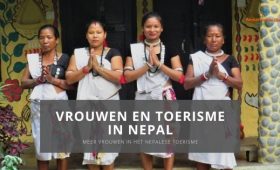Tihar (fall):
Tihar is one of the most important festivals in Nepal. It takes place over 5 days in October/November. The main aim of the festival is to celebrate life and the deities and here’s an example of one of the celebrations during Tihar:
Mah puja: Mha puja is celebrated on the fourth day of Tihar. On this day Mha puja and New year are celebrated by the newari community of Nepal. Mha Puja means “worship of the self” in Newari, and it celebrates the spirit within oneself. In this festival people make a mandala in the ground for each member and two extra mandalas are drawn at the end of the row for the two messengers of death. Members of the family, first males followed by females, sit cross- legged in a row and older females play the role of facilitators for each member. Mha puja offers a variety of food such as fruits, nuts, and sweets which symbolize a wish for a fruitful and resourceful life. Every member of the family sits in front of their mandala and worships together step by step. The items used to adorn the mandala symbolize good fortune, long life and freedom from perils.
Holi (spring):
Holi is the festival of colors which is celebrated by Hindus. It is a joyful occasion where people come together to play with water and bright colours. The motive of holi is washing away sorrows and sadness, filling lives with colors and happiness. In Nepal, Holi is celebrated over two days. The first day is observed by people from hilly and mountainous regions, while the next day is dedicated to those from the Terai. As Holi approaches, the air becomes filled with excitement. Children and teenagers eagerly start playing Holi two weeks before the actual festival, engaging in water balloon fights and using water guns. Additionally, numerous DJ sessions and Holi events take place in restaurants and resorts. People relish the celebrations, immersing themselves in colors, water, dancing, and enjoying the festivities with a refreshing cold beer in hand. Holi is also an occasion for family reunions, where loved ones and friends are invited to homes to celebrate together.
Indra jatra (fall):
There are various jatras in Nepal, and one of the most eagerly awaited is the Indra jatra. It represents the celebration of Indra, the god of rain, and the Nepalese go to worship him to thank him for the monsoon and for bringing the dead to heaven.
The festival lasts for 8 days, and various “events” take place, such as the celebration of the dead with incense and candles, the procession of the goddess Kumari, and so on. It’s also possible to see huge Bhairava masks with local beer, which the Nepalese drink to bring them happiness, love and prosperity.
Indra jatra is a very important event for the Nepalese. Dances and chariot demonstrations are the order of the day.



